
explain to you what to see in Medina del Campo involves reviewing the monuments of one of the most historic villas in Spain. Inhabited since pre-Roman times, it owes its name to the Arabs. But its first big expansion came when Alfonso VI of Leon he ordered to repopulate it at the end of the XNUMXth century.
Its growth was helped by its privileged location in the current province of Valladolid. Perhaps because of her, it had enormous importance in the Medieval and even more so during Renacimiento. But his development was not without problems. During the War of the Communities, was almost destroyed by the troops of Carlos I. At that time, it was already one of the most important wool trading centers in Europe. Impressive monuments have remained of that prosperity. We are going to show them to you in this article about what to see in Medina del Campo.
La Mota Castle
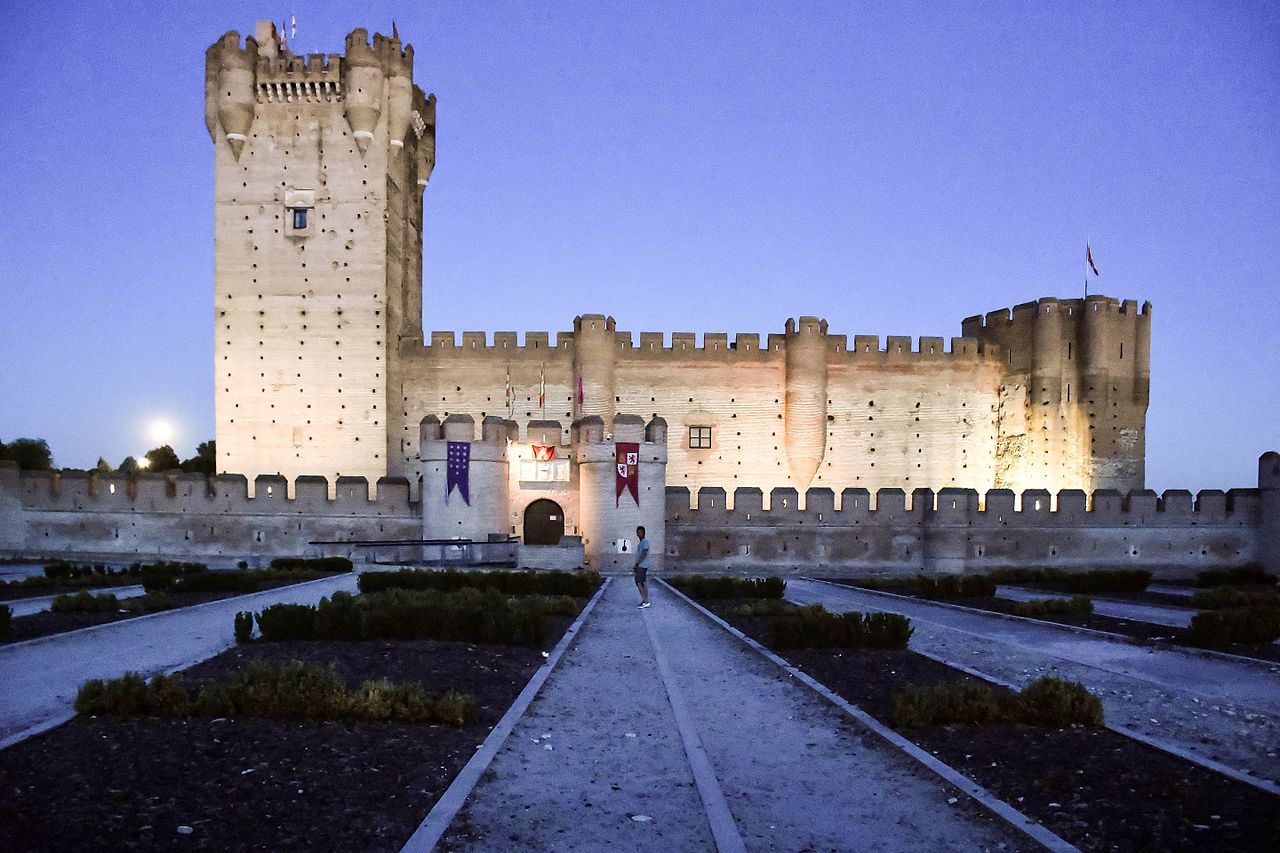
Night image of the Mota castle
We begin our tour of the wonders of Medina by telling you about its great symbol: the castle of la mota. It is located on the outskirts of the current town, where the primitive town was, and is in a magnificent state of conservation. Not surprisingly, it was restored in the XNUMXth century. Its construction began in the mid-XNUMXth century by order of John II of Castile, although it was completed during the reign of the Catholic kings.
This medieval marvel has a trapezoidal floor plan with two successive walls. Its access is a huge arch that is reached after crossing two bridges, the second drawbridge over the moat. Likewise, it has five large battlemented towers, among which the homage tower stands out, with forty meters in height.
You can visit this monumental jewel for free every day of the week. However, if you want to make a guided tour, it will cost you about four euros. In this case, it is advisable to arrange the visit in advance.
Royal Testamentary Palace and other grand stately homes
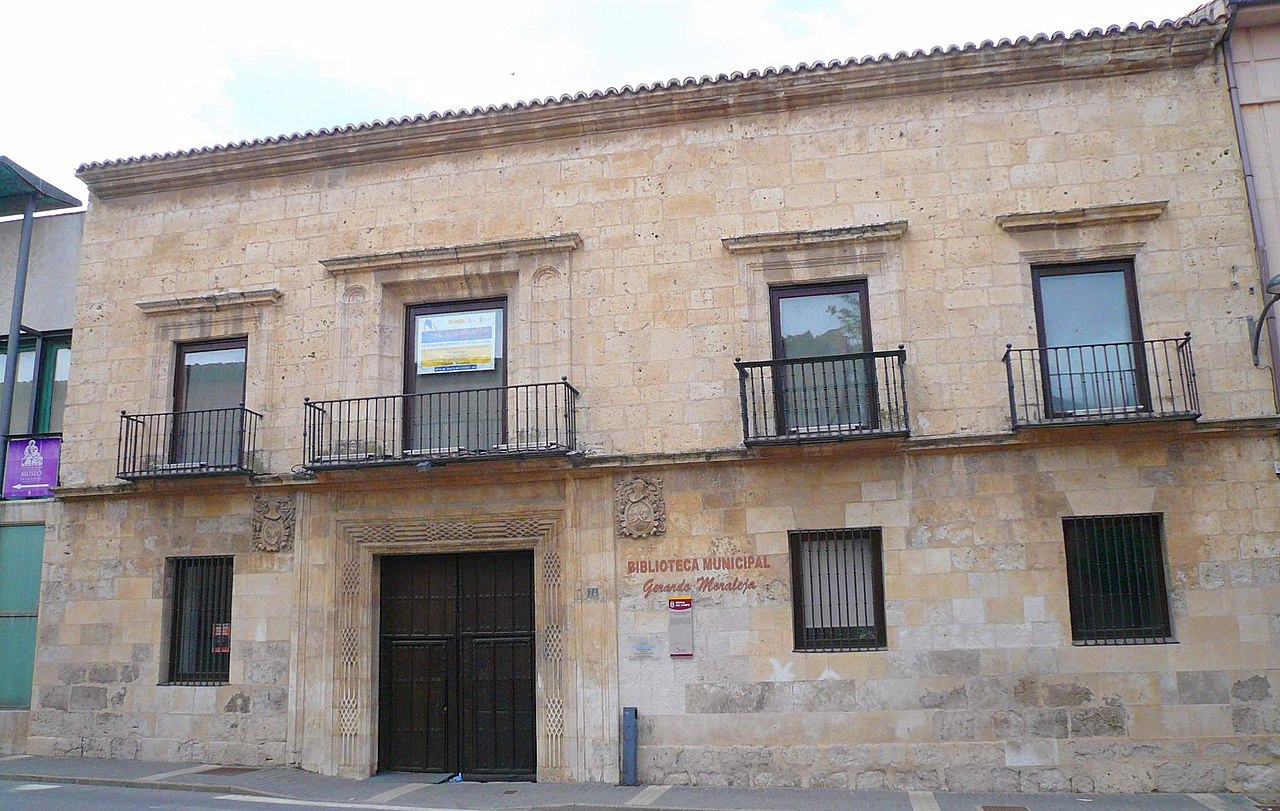
The Palace of the Marquis of Falces
The Royal Testamentary Palace owes its name to the transcendental historical events that it housed. It was the scene where the queen dictated her will Isabel the Catholic in October 1504 and where he died a month later. It was built in the XNUMXth century and, at the time of the Catholic monarch, it was a royal residence. However, after it died, it was used for various uses. Thus, it was a prison and, later, the seat of the Medina City Council. Currently restored, it houses a interpretation center on the life of Isabel.
But, as we have told you, the Castilian town lived through a period of splendor in the Middle Ages and the Renaissance. Therefore, it is not surprising that it has other palaces and stately homes of that time. Among them, stands out the Duenas Palace, a marvel of Renaissance art built in the XNUMXth century by order of Don Diego Beltran. She also lived in it Don Rodrigo Duenas, to which it owes its name and which, in turn, built the Casa Blanca (another Italian-style gem) as a playground on the outskirts of Medina.
To the same period belong the Palace of the Admiral or Casona de los Mier and Palace of the Marquis of Falces, which today is the house of culture. In short, the list of stately homes that you can see in the Castilian town would be very long. But, among them, also stand out the Palaces of the Quintanilla or Counts of Bornos and mansions of the count of Adanero, the Belloso, the Mayorazgo de los Montalvo or the Galarza. But we cannot expand on them because we must also tell you about other monuments in Medina.
The Plaza Mayor, another essential thing to see in Medina del Campo
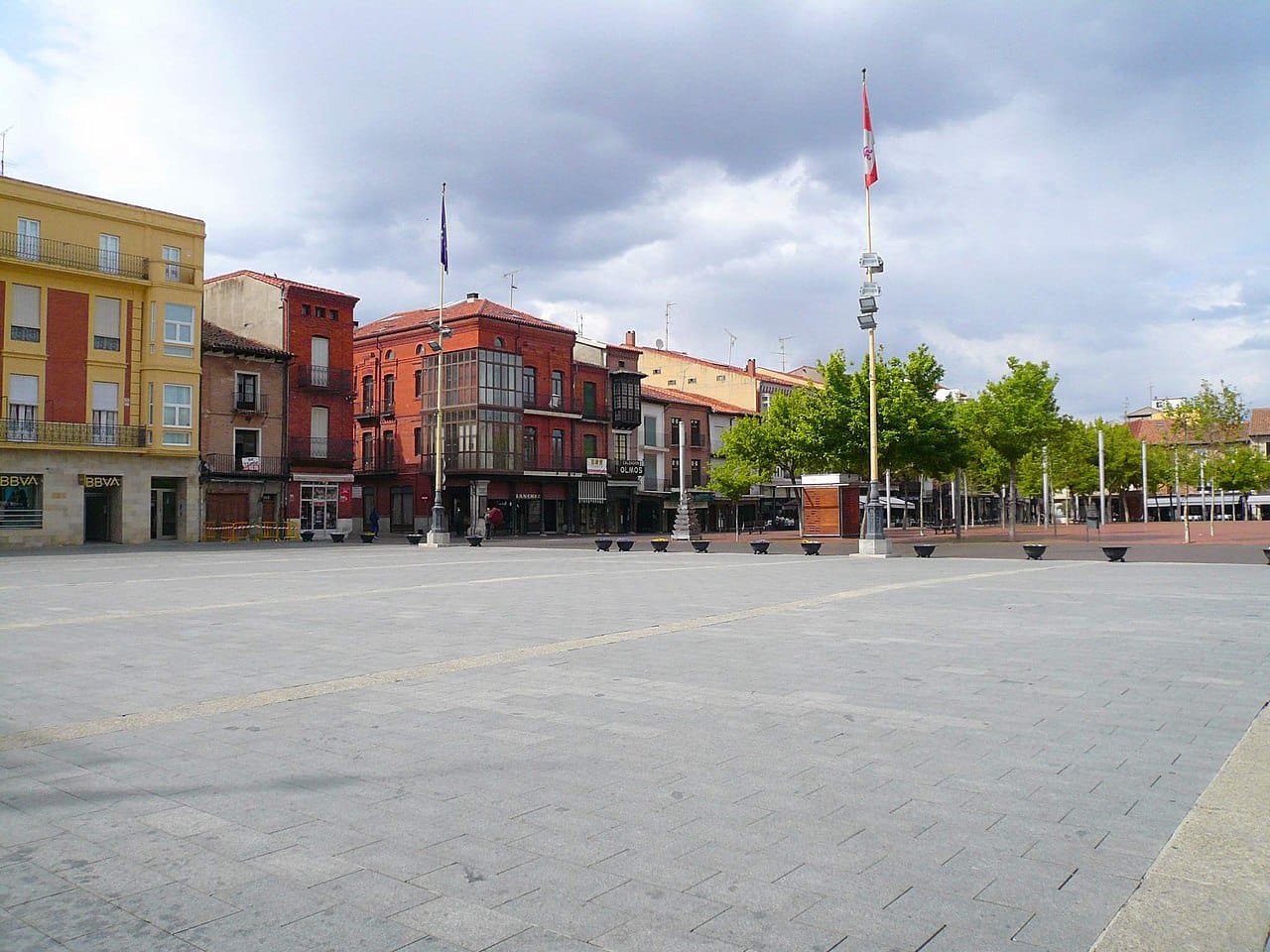
Hispanic Plaza Mayor
It is almost impossible for you to visit Medina and not go through the Hispanic Plaza Mayor. As a curious fact, we will tell you what it is the largest in Spain among those of its kind, surpassing other more famous ones such as those of Madrid o Salamanca. It has no less than fourteen thousand square meters and houses buildings as unique as the aforementioned Royal Palace, Collegiate Church of San Antolin and Town hall (We will talk about these two below).
These three constructions symbolized the union of traditional powers: the royal, the municipal and the religious. Likewise, important international fairs were held in the square, mainly related to wool. But, in addition, it stands out because it was antecedents of the arcaded main square model. By the way, in it you have the tourist office, next to the Town Hall.
Collegiate Church of San Antolin
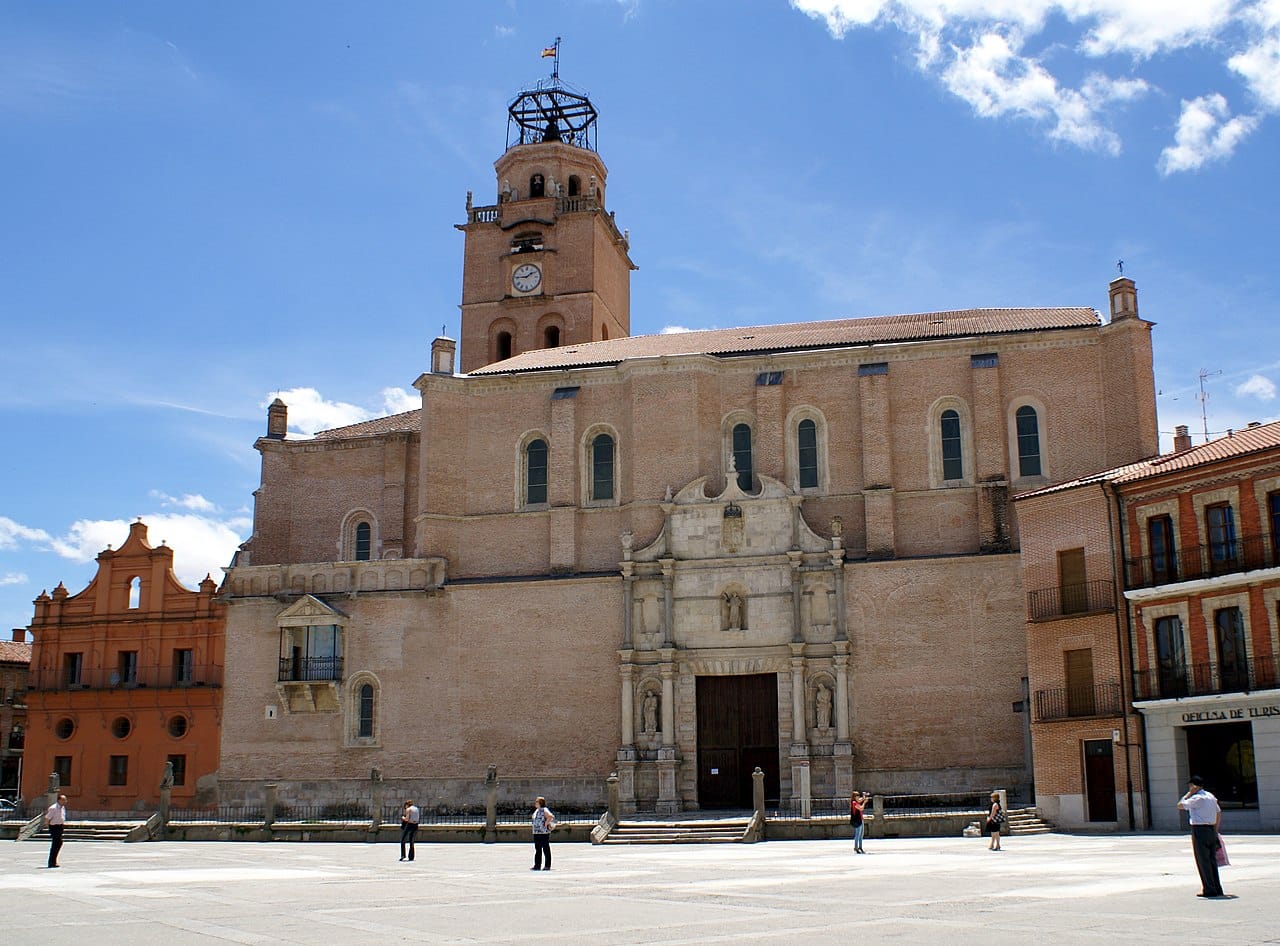
Collegiate Church of San Antolín, one of the wonders to see in Medina del Campo
When deciding what to see in Medina del Campo, another essential monument is the Collegiate Church of San Antolín, its main religious building. The current building is from the XNUMXth and XNUMXth centuries, but there was an earlier temple. It is mainly Gothic and its author was Juan Gil de Hontanon, a great architect who also participated in the design of the Cathedral of Sevilla.
Outwardly, its large lintel door and its bell tower with a curious clock stand out. But above all, look at the balcony of the Virgen del Pópulo, which is to the left of the portal and which forms an open chapel dedicated to Our Lady of the Conception. This chapel model would be widely reproduced in the cathedrals of Latin America. Also, you can climb the temple tower on a guided tour. You will have a spectacular panoramic perspective of the Castilian town and its surroundings.
Despite its great monumental value, the Collegiate Church of San Antolín is currently one of the churches owned by Medina. Among these, there are also others of great artistic importance. There are so many that we cannot list them all. But, as an example, we will mention the churches of Santo Tomás, San Miguel and Santiago, all from the XNUMXth century, as well as the hermitages of San Roque and the Virgen del Amparo.
Likewise, we cannot forget other magnificent religious constructions of the Castilian town. It is the case of San Jose convents, first foundation of St. Teresa of Jesus outside Avila; of Santa María Magdalena, Santa Clara and Santa María la Real.
City Hall, a jewel in the center of Medina
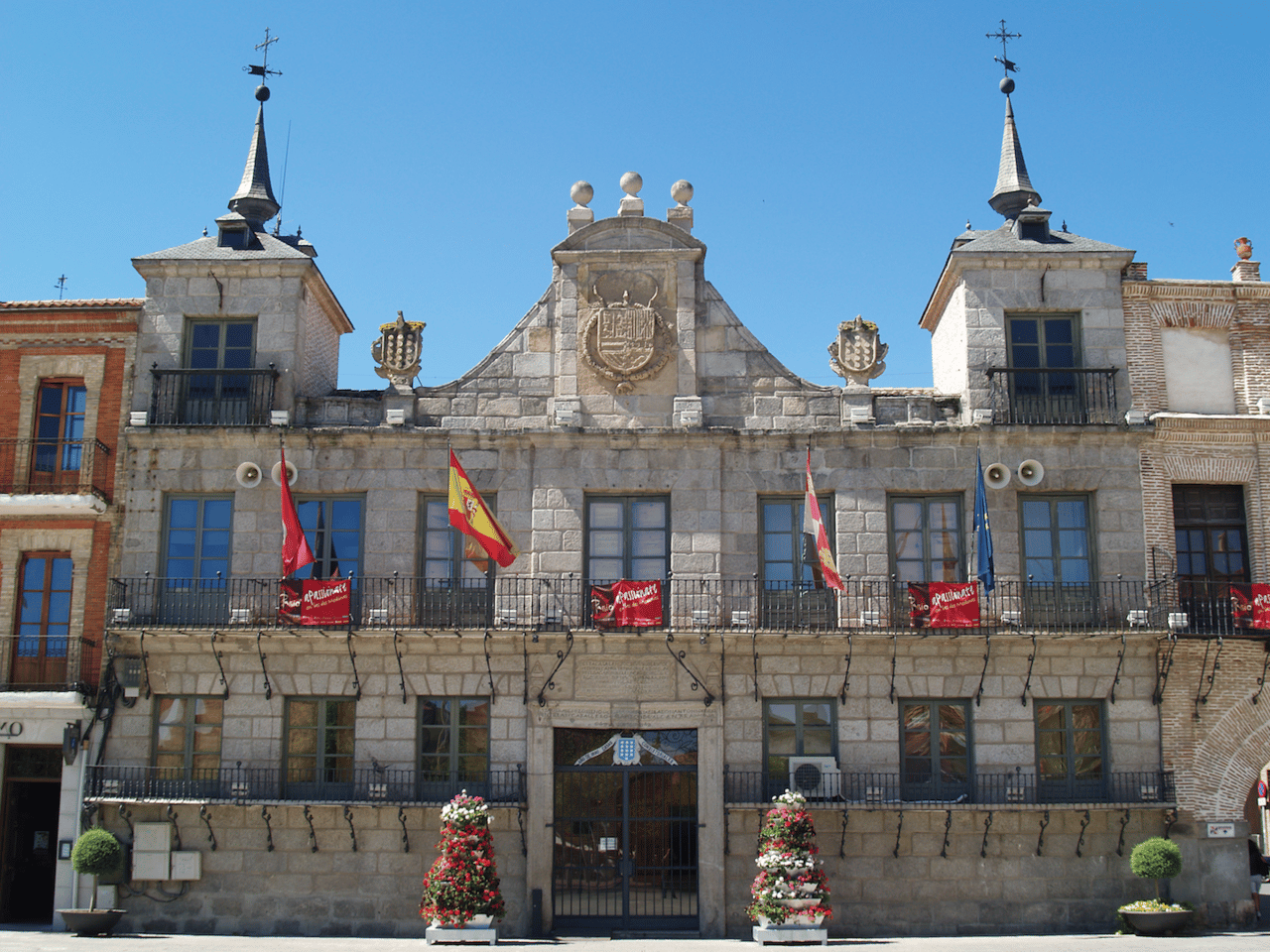
Municipality of Medina del Campo
As we were saying, in the Plaza Mayor you have the beautiful City Hall building. It was built in the XNUMXth century when it was decided to move the Consistory to the center of the town. Those responsible for the building were Matthew Martin y Francisco Cillero. Its main facade is symmetrical and is built in stone ashlars. It consists of two floors, each of which has a continuous balcony. From them, the authorities presided over the festivities and events. For its part, the secondary facade of Gamazo street has two continuous arches.
Currently, the City Council forms a unit with the House of the Arches. This was also built in the XNUMXth century, in its case so that the ecclesiastical authorities could witness the acts of the Plaza Mayor. For this reason, it also has a continuous balcony over the two arches that give it its name and that open access to the square. Also, it is chaired by coat of arms of the council.
Also in this is the Weight House, also built in the XVII. In this case, it owes its name to the fact that the Actual weight, where the officiality of the measures was guaranteed. It has a brick facade and two floors. The first also has a continuous balcony, while the second has individual ones. For its part, the decline has arcades with lowered arches.
Salinas Palace

Entrance to the Museum of the Fairs of Medina del Campo
It was built at the end of the XNUMXth century as Spa to take advantage of the hot springs in the area. It is, therefore, on the outskirts of Medina. It has an eclectic style that recalls in its forms the Magdalena Palace de Santander. Currently, it is open, so you can stay in it.
If you do or visit it, take a look at the chapel, renamed the The Millennium Chapel Museum. he was the artist Christopher Gabarron who was in charge of creating an allegorical mural painting of almost five hundred square meters inside whose theme is the values of the United Nations Organization. But he also included other works such as a Crucified Christ, the access door to the chapel and various works in glass and wood.
Also, from it comes a bike lane of about five kilometers that ends in the Villa de las Ferias theme park, also designed by Gabarrón, in this case as a tribute to the fairs that were organized in Medina in the XNUMXth and XNUMXth centuries. But he's not the only one. Because you also have in the villa the Fair Museum Foundation, a unique sample in Spain. Inspired by these events, it houses important works of art, historical pieces and documents from the time in which they lived their heyday. It also organizes other temporary exhibitions.
It has also been very important Holy Week in Medina along the centuries. For this reason, at the Vicente Ferrer Cultural Center, you have another museum dedicated to her. Is he Footprints of Passion Interpretation Center and houses all kinds of objects and works of art related to that festivity.
In conclusion, we have shown you much of what What to see in Medina del Campo. We strongly advise you to visit this beautiful and historic town of Castilla y Leon. Also, you can do it in August, when he celebrates his Renaissance Week, with numerous activities and almost four thousand extras giving life to characters as well known as St. Teresa of Jesus, Catholic kings o Saint Vincent Ferrer. Go ahead and get to know this magnificent Castilian town and tell us about your experience.